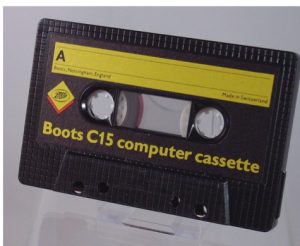History (1975): Compact Cassette for Data
Capacity of 660KB per side on 90-minute tape
This is a Press Release edited by StorageNewsletter.com on December 11, 2018 at 2:23 pmThis article was published by the Museum of Obsolete Media.
Compact Cassette for data (1975-late 1980s)

Early microcomputers often used punched tape for data storage, until in 1975 Jerry Ogdin and Les Solomon co-authored an article in Popular Electronics magazine about using inexpensive compact cassettes with audio tones to represent the binary data.
Many home computers of the late 1970s and early 1980s subsequently used cassettes for data storage as a cheaper alternative to paper tape or the floppy disks increasingly used in high-end microcomputers.
Typical speeds of loading were from 500 to 2,000bit/s, although some games used special, faster-loading routines, up to around 4,000bit/s. A rate of 2,000bit/s equates to a capacity of around 660KB per side of a 90-minute tape.
Any type of compact cassette could be used, but smaller length cassettes such as C10 and C15 were produced for recording data.
Floppy disk storage become more prevelant by the mid-1980s, but cassettes remained popular for 8-bit computers such as the Commodore 64 and ZX Spectrum, particularly in the UK.
Reliability of cassettes were variable, and multiple attempts to load programmes were sometimes required.













 Subscribe to our free daily newsletter
Subscribe to our free daily newsletter

